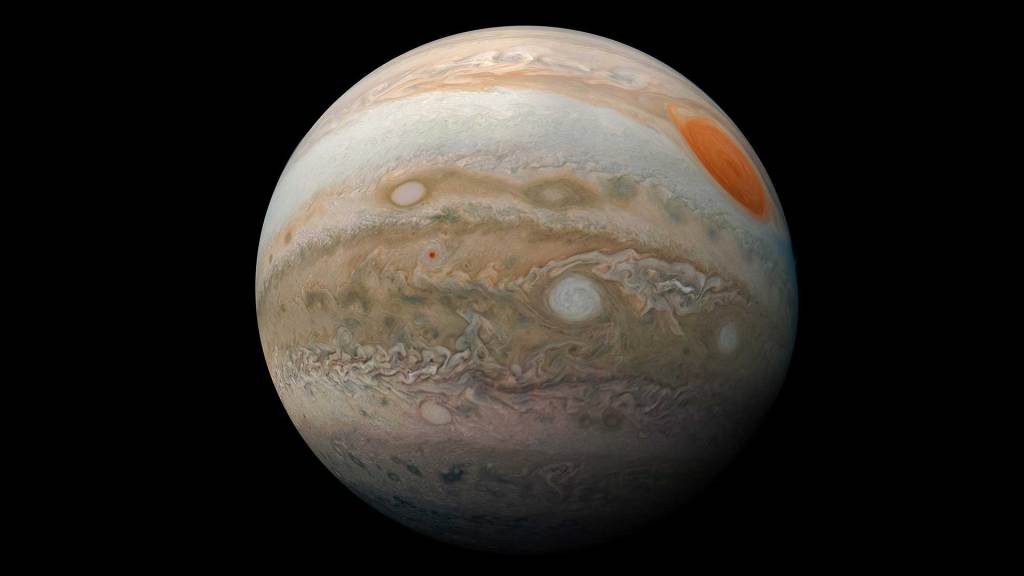

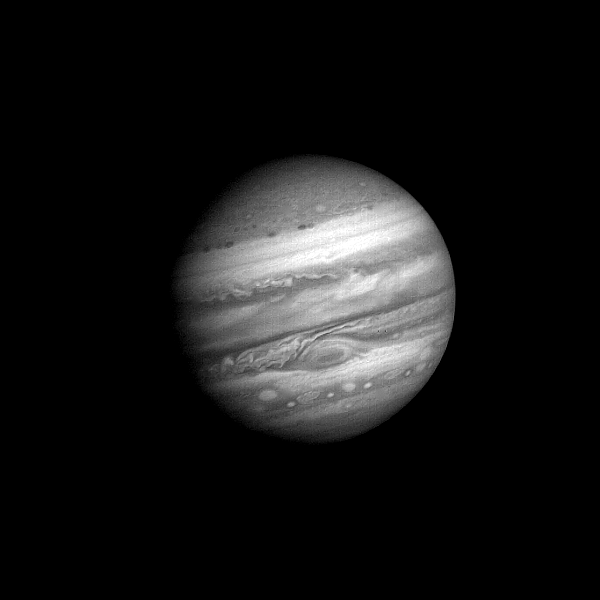
Jupiter Exploration
Jupiter shines bright in the night sky, so people have known about it since ancient times. The first detailed observations of this planet were made by Galileo Galilei in 1610 with a small, homemade telescope. More recently, this planet has been visited by orbiters, probes, and by spacecraft passing by on their way to other worlds. NASA’s Juno spacecraft has been studying Jupiter from orbit since July 2016. Europa Clipper launched Oct. 14, 2024, to study Jupiter's icy moon, Europa.
Missions to Jupiter
-
Pioneer 10
NASA's first spacecraft to visit the outer planets — Pioneer 10 — was launched in March 1972 on a 21-month mission to Jupiter. It made its closest approach to Jupiter on Dec. 4, 1973. After successfully completing its mission at Jupiter, the spacecraft was put on a trajectory that will eventually take it out of the solar system. Pioneer 10 sent its last signal to Earth in January 2003 from a distance of 7.6 billion miles.
 An artist's concept of the Pioneer spacecraft.NASA
An artist's concept of the Pioneer spacecraft.NASA -
Pioneer 11
The sibling spacecraft to Pioneer 10, Pioneer 11 flew even closer to Jupiter in 1974, passing by on its way to Saturn. Pioneer 11 also is on a path that will eventually take it out of the solar system. Like its sibling, it carries a plaque with a message for any intelligent beings that may encounter it.
 Jupiter as seen from above its north pole by Pioneer 11 in 1974.
Jupiter as seen from above its north pole by Pioneer 11 in 1974. -
Voyager 1
As it flew by Jupiter in March 1979, Voyager 1 discovered a thin ring around the planet, two new moons, and active volcanoes on the volatile moon Io, before continuing on to Saturn and interstellar space.
 This is the original Voyager "Blue Movie" — built from blue filter images. It records the approach of Voyager 1 during a period of over 60 Jupiter days. This time-lapse movie was produced at JPL by the Image Processing Laboratory in 1979.NASA/JPL
This is the original Voyager "Blue Movie" — built from blue filter images. It records the approach of Voyager 1 during a period of over 60 Jupiter days. This time-lapse movie was produced at JPL by the Image Processing Laboratory in 1979.NASA/JPL -
Voyager 2
Voyager 2 began transmitting images of Jupiter April 24, 1979, for time-lapse movies of atmospheric circulation. Unlike Voyager 1, Voyager 2 made close passes of the Jovian moons on its way into the system, with scientists especially interested in Europa and Io.
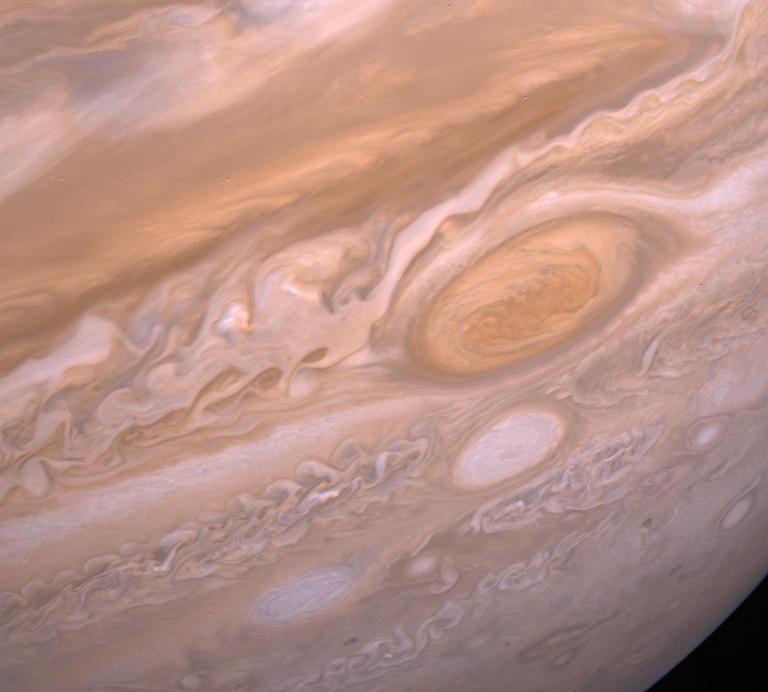 This Voyager 2 image shows the region of Jupiter extending from the equator to the southern polar latitudes in the neighborhood of the Great Red Spot. The picture was taken on July 3, 1979, from 3.7 million miles (6 million kilometers).NASA/JPL
This Voyager 2 image shows the region of Jupiter extending from the equator to the southern polar latitudes in the neighborhood of the Great Red Spot. The picture was taken on July 3, 1979, from 3.7 million miles (6 million kilometers).NASA/JPL -
Galileo
The Galileo mission consisted of two spacecraft: an orbiter and an atmospheric probe. Launched on Oct. 18, 1989, from the cargo bay of Space Shuttle Atlantis, the spacecraft orbited Jupiter for almost eight years, and made close passes by all the planet's major moons. Galileo even carried a small probe that it deployed and sent deep into the atmosphere of Jupiter. When the main spacecraft plunged into Jupiter's crushing atmosphere on Sept. 21, 2003, it was being deliberately destroyed to protect one of its key discoveries - a possible ocean beneath the icy crust of the moon Europa.
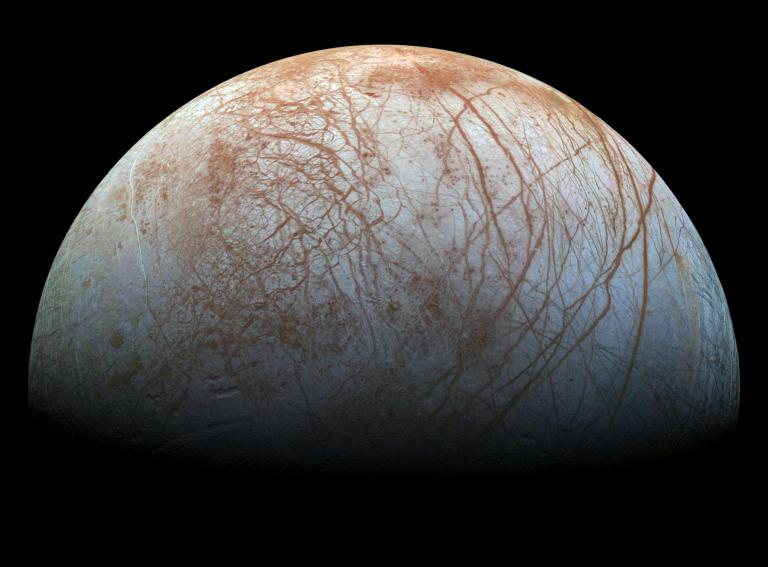 The puzzling, fascinating surface of Jupiter's icy moon Europa looms large in this color view created from images taken by NASA's Galileo spacecraft in the late 1990s.NASA/JPL-Caltech/SETI Institute
The puzzling, fascinating surface of Jupiter's icy moon Europa looms large in this color view created from images taken by NASA's Galileo spacecraft in the late 1990s.NASA/JPL-Caltech/SETI Institute -
Cassini
Cassini spent about six months – from October 2000 to March 2001 – exploring the Jupiter system. The closest approach brought Cassini to within about 6 million miles (9.7 million kilometers) of Jupiter's cloud tops at 2:05 a.m. Pacific Time, or 10:05 a.m. UTC, on Dec. 30, 2000.
Cassini captured some 26,000 images of Jupiter and its moons over six months of continual viewing, creating the most detailed global portrait of Jupiter yet. This true color mosaic of Jupiter was constructed from images taken on Dec. 29, 2000, by Cassini during its closest approach to the giant planet.NASA
This true color mosaic of Jupiter was constructed from images taken on Dec. 29, 2000, by Cassini during its closest approach to the giant planet.NASA -
Juno
Juno has been In orbit around Jupiter since 2016. It's probing beneath the planet's dense clouds to answer questions about Jupiter's origin and evolution. It's scheduled to continue investigating the solar system’s largest planet, its moons, faint rings, and surrounding environment through September 2025.
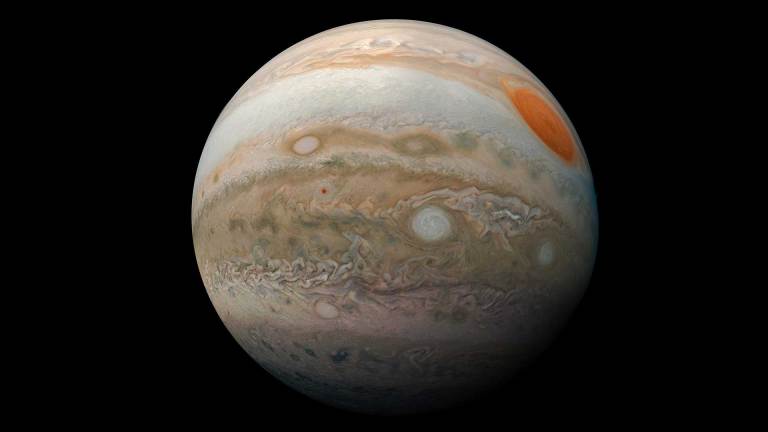 NASA’s Juno spacecraft took three images of Jupiter’s Great Red on Feb. 12, 2019, that were used to create this color-enhanced view.Enhanced image by Kevin M. Gill (CC-BY) based on images provided courtesy of NASA/JPL-Caltech/SwRI/MSSS
NASA’s Juno spacecraft took three images of Jupiter’s Great Red on Feb. 12, 2019, that were used to create this color-enhanced view.Enhanced image by Kevin M. Gill (CC-BY) based on images provided courtesy of NASA/JPL-Caltech/SwRI/MSSS -
Europa Clipper
NASA's Europa Clipper launched on Oct. 14, 2024, and will reach Jupiter in 2030. During dozens of flybys, the spacecraft will investigate Jupiter's icy moon Europa to determine whether there are places below the surface that could support life.
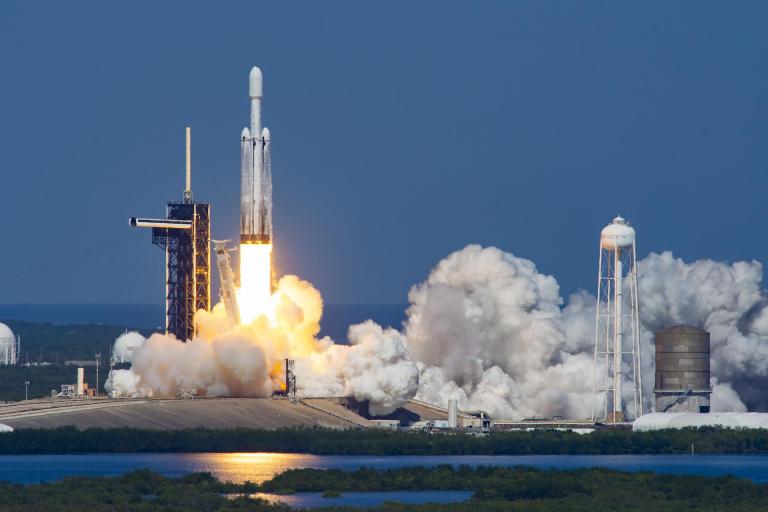 NASA’s Europa Clipper spacecraft lifts off from Launch Complex 39A at NASA’s Kennedy Space Center in Florida at 12:06 p.m. EDT on Monday, Oct. 14, 2024.SpaceX
NASA’s Europa Clipper spacecraft lifts off from Launch Complex 39A at NASA’s Kennedy Space Center in Florida at 12:06 p.m. EDT on Monday, Oct. 14, 2024.SpaceX




























